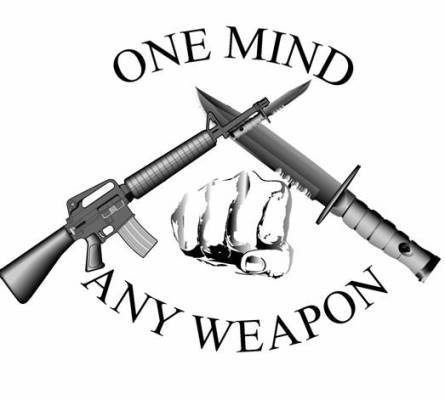Marine Corps Martial Arts Program training at Marine Corps Air Station Miramar, Calif., March 26.
Amid the small-bore terrorists plaguing the U.S. this week, the Army’s mighty M-1 tanks, the Air Force’s stealthy B-2 bombers and the Navy’s mammoth aircraft carriers are…worthless.
That’s why it’s refreshing to see the Marines continuing to practice the martial arts.
The Marine Corps Martial Arts Program embraces the most rudimentary form of combat. It pits one person against another, often without weapons, or ISR – intelligence, surveillance and reconnaissance – beyond what can be glimpsed with one’s own eyes.
Think of it as the ultimate in hand-to-hand combat.
The debate over where acts of terror fall on the law enforcement-military spectrum never ends. But let’s face it: the notion of Marines trained in the martial arts dealing with the Boston bomber has a certain rightness about it.
“Like marksmanship training, this program provides our Marines with additional tools that they can use on the battlefield,” then-general James Jones, the Marine commandant, said when he created the corps’ current martial-arts program in October 2000.
“Although it is a skill progression program offering martial arts training through a system of belt rankings from tan through sixth degree black belt, it is much, much more,” Jones said in a message sent to all Marines shortly after he launched the program. “It is a reflection of our warrior ethos that provides a vehicle for enhanced unit cohesion and increased self-worth.”
More than a decade later, Marines remain gung-ho about the program, according to a recent account of training inside a rubberized gravel pit ringed by half-buried tires at California’s Miramar air station.
“When I teach the technique, it’s more than just how to knock someone over. You have to be mentally sharp and know exactly what you’re doing in any situation,” said 1st Lt. Mark Cowett, a Marine martial-arts instructor. “That way, they really understand how MCMAP is more than just a test to be taken for a belt. It’s actually a real life scenario and response to any kind of situation.”
Here are the requirements the Marines set for their various colored belts, which are worn with the Marine utility uniform:
Tan Belt – Basic fundamentals of the mental, character, and physical disciplines; conducted during entry-level training. Character and knowledge required of a basically trained Marine.
Gray Belt – Introduction to intermediate fundamentals of each discipline. Gray Belt is the minimum training goal for all Aviation Combat and Combat Service Support Marines.
Green Belt – Intermediate fundamentals of each discipline. Green Belt is the minimum training goal of all noninfantry ground combat arms Marines.
Brown Belt – Introduction to advanced fundamentals of each discipline. Brown Belt is the minimum training goal (rank appropriate) of all infantrymen.
Black Belt 1st Degree – Advanced fundamentals. Prerequisites – Recommendation of Reporting Senior; complete Brown Belt Sustainment and Integration Training; Sergeant or above; appropriate level PME [Professional Military Education] complete.
Black Belt 2nd Degree — The candidate for Black Belt 2nd Second Degree must submit to the Director, MCMAP an “Elements of Martial Culture Analysis” (EMCA) for review and approval.
Black Belt 3rd Degree — The candidate must submit to the Director, MCMAP a “Unit Training Integration Plan” (UTIP) for review and approval…Candidates must have: recommendation of Reporting Senior; attained the rank of Staff Sergeant, Chief Warrant Officer-2 (CWO-2), Captain or above; appropriate level PME complete; three years experience at Black Belt 2nd Degree.
Black Belt 4th Degree — Promotion requires the Marine to obtain a Black Belt 1st Degree in a MCMAP approved civilian martial art. Candidates must have: recommendation of Reporting Senior; attained the rank of Gunnery Sergeant, CWO-3 to CWO-5, Major or above; appropriate level PME complete; three years experience at Black Belt 3rd Degree.
Black Belt 5th and 6th Degrees — The Director, MCMAP will convene a board annually to consider Marines for promotion to 5th and 6th Degree…Candidates for Black Belt 5th Degree must have: recommendation of Reporting Senior; attained the rank of Master Sergeant, First Sergeant, CWO-3 to CWO-5, Major or above; a teaching certificate in a MCMAP approved civilian martial art; appropriate level PME complete; and five years experience at Black Belt 4th Degree. Candidates for Black Belt 6th Degree must have: recommendation of Reporting Senior; attained the rank of Master Gunnery Sergeant, Sergeant Major, CWO-4 to CWO-5, Lieutenant Colonel or above; appropriate level PME complete; and five years experience at Black Belt 5th Degree.
And you thought the Marines’ regular ranks were complicated.



